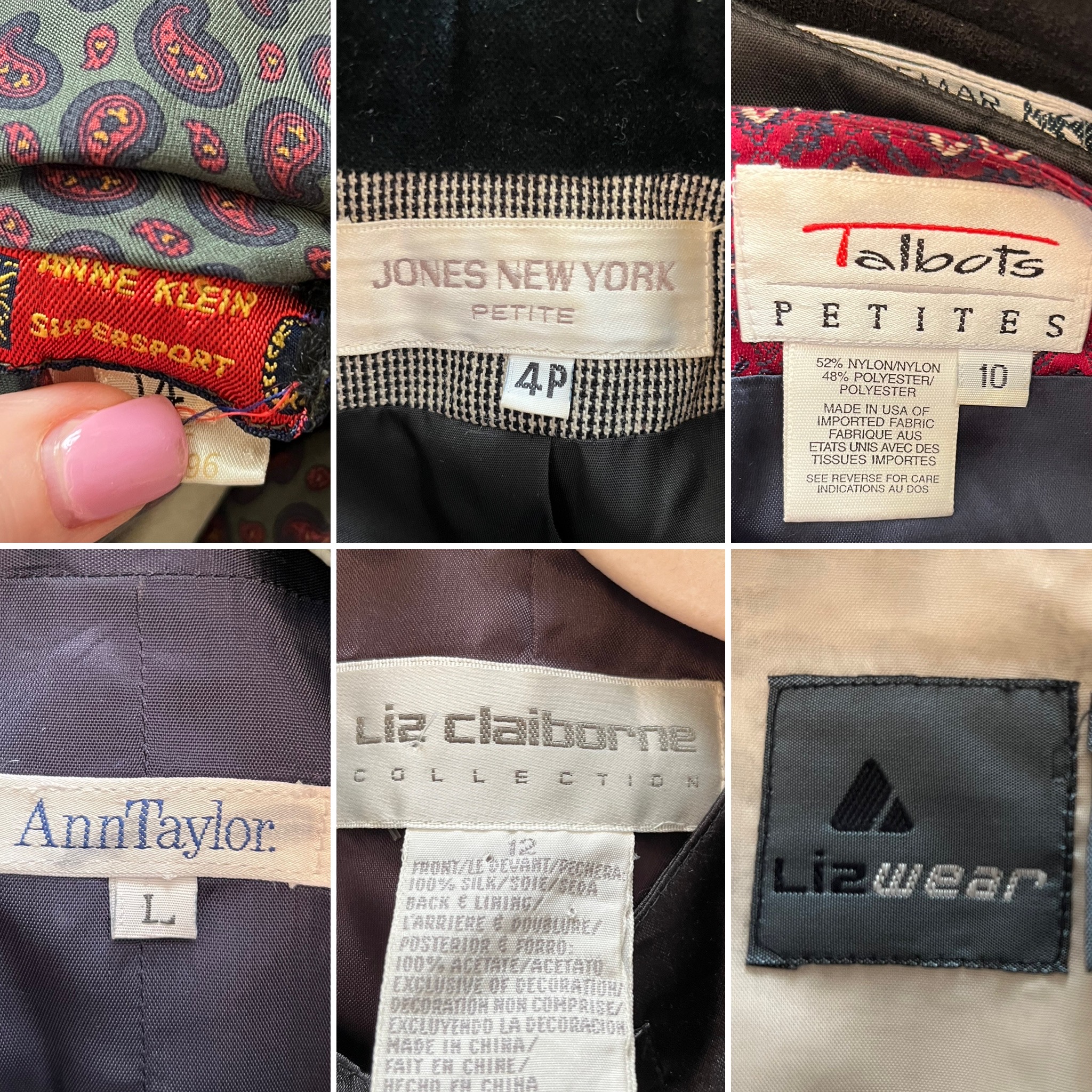The Importance of Sustainable Apparel: Just How It Influences the Atmosphere and Your Wardrobe
Sustainable clothing is increasingly recognized for its important duty in decreasing the environmental influence of the quick garment industry. By concentrating on green products and moral production techniques, it deals with pushing ecological concerns. This shift not only benefits the planet but likewise affects consumer selections, causing a much more thoughtful method to wardrobe monitoring. Comprehending these characteristics raises vital concerns regarding style's future and personal duty in shaping it.
The Ecological Impact of Quick Fashion

Advantages of Sustainable Products
Lasting products provide considerable advantages, particularly through green textile options that decrease ecological damage. These materials also show durability and long life, lowering the requirement for regular replacements. Consequently, they add to a much more sustainable garment industry and advertise liable customer behavior.
Eco-Friendly Textile Options
While the garment industry has actually long been connected with quick fads and ecological damage, the rise of environmentally friendly material choices offers a transformative chance. Lasting materials such as natural cotton, hemp, and Tencel have obtained popularity due to their reduced ecological impact. These fabrics are usually produced without damaging pesticides and need less water, decreasing their carbon impact - Branded Clothing. Additionally, several environment-friendly materials are biodegradable, adding to a round economic climate by decreasing waste. Picking sustainable materials not only sustains eco responsible methods yet also promotes healthier communities. As customers come to be much more knowledgeable about their acquiring power, the need for eco-friendly fabrics urges brands to innovate and embrace even more lasting manufacturing methods, ultimately profiting the planet and future generations
Longevity and Longevity Benefits
Numerous consumers are progressively acknowledging the longevity and durability advantages of sustainable products in their clothes choices. Unlike conventional textiles, sustainable materials such as natural cotton, hemp, and recycled polyester are engineered to stand up to damage, leading to garments that last much longer. This lowered regularity of replacement not only saves customers money over time but also decreases waste produced by fast fashion. Furthermore, lasting clothes typically employs eco-friendly manufacturing approaches that boost textile stamina, contributing to a reduction in the total carbon impact. By buying resilient clothing, customers can grow a more sustainable closet while enjoying premium items that keep their aesthetic and functionality over time. Subsequently, toughness and durability stand as essential advantages of picking sustainable products.
Minimizing Waste Via Sustainable Practices
Minimizing waste in the fashion industry can be achieved with innovative techniques such as upcycling and repurposing materials. In addition, embracing minimalist wardrobe methods encourages customers to prioritize top quality over quantity, eventually decreasing garments consumption. With each other, these techniques contribute substantially to a more lasting clothing design.
Upcycling and Repurposing Products
Upcycling and repurposing materials have actually become ingenious methods in the style industry, transforming thrown out textiles into useful new products. This strategy not only lessens waste yet also urges creative thinking and originality in clothes layout. By taking old garments and materials, developers can produce distinct items that mirror individual style while minimizing the need for brand-new resources. In addition, upcycling commonly calls for much less energy and water compared to typical production procedures, significantly reducing the ecological impact of style. As customers become a lot more familiar with sustainability, the popularity of upcycled clothing remains to increase, advertising a round economic situation. Ultimately, these practices add to an extra lasting future, where style focuses on ecological wellness over rapid production and consumption.

Minimalist Wardrobe Strategies
As people increasingly look for to decrease their environmental impact, embracing minimal closet strategies has gained traction as an effective approach to sustainable style. These methods highlight top quality over amount, encouraging consumers to curate a smaller collection of functional, long lasting garments. By concentrating on classic items that can be blended and matched, individuals can lower the regularity of acquisitions and eventually lower great site waste.Additionally, minimalism advertises conscious usage, urging customers to show on the ecological and honest implications of their choices. This strategy not only cultivates a much more sustainable way of living however also streamlines day-to-day decision-making pertaining to clothes. As people accept minimal concepts, they add to a style culture that values sustainability and responsible consumerism, inevitably bring about a much more eco-conscious culture.
The Function of Moral Labor in Sustainable Style
While numerous customers are progressively aware of the environmental consequences of their clothing selections, the value of moral labor methods in sustainable fashion can not be neglected. Honest labor incorporates reasonable earnings, secure working problems, and respect for workers' rights, creating the foundation of responsible style production. Brand names that prioritize honest labor not just uplift neighborhoods yet also set a standard for responsibility in the industry.Moreover, the assimilation of ethical methods cultivates transparency, making it possible for customers to make informed choices regarding their acquisitions. This technique contrasts sharply with quick fashion's unscrupulous labor models, which frequently prioritize profit over individuals. By sustaining firms committed to ethical labor, consumers add to a system that values human self-respect along with environmental sustainability. Ethical labor is not simply an add-on; it is necessary to the more comprehensive objective of sustainable fashion, ensuring that the pursuit for eco-friendliness does not come at the cost of human legal rights.
The Impact of Lasting Apparel on Carbon Emissions
Sustainable clothing has the possible to greatly decrease carbon exhausts connected with the fashion sector. Typical garment production adds especially to greenhouse gas discharges, primarily because of energy-intensive manufacturing procedures and using non-renewable sources. In comparison, sustainable style concentrates on eco-friendly products, such as organic cotton or recycled fibers, which frequently call for less energy to produce.Moreover, sustainable brand names tend to take on much more efficient production methods, reducing waste and decreasing general emissions. By focusing on durability and ageless layout, sustainable apparel encourages customers to buy less often, additional decreasing the carbon footprint connected with overconsumption.Additionally, lots of lasting brands are devoted to openness in their supply chains, making it possible for customers to go to this site make informed selections that straighten with their worths. Inevitably, changing in the direction of sustainable clothes can cause a significant decrease in carbon exhausts, adding to a much healthier earth and a much more sustainable future for the fashion industry.
Sustaining Neighborhood Economies With Sustainable Selections
The shift towards lasting clothing not only addresses ecological concerns but likewise substantially advantages local economic climates. By picking lasting style, customers frequently sustain small companies and regional artisans, improving neighborhood durability. These business usually run on a smaller sized range, prioritizing workmanship and ethical methods over mass production.Investing in locally made lasting clothes fosters work production and promotes financial development within neighborhoods. As consumers become more knowledgeable about the environmental impact of their acquisitions, they progressively seek out products that reflect their worths. This need encourages local manufacturers to take on lasting methods, adding to a round economy.Moreover, sustaining regional services minimizes transportation exhausts, straightening with eco-conscious customer actions. The interconnectedness of sustainable clothing and neighborhood economic situations highlights the crucial role that private choices play in advertising both economic and ecological health and wellness. By fostering these neighborhood connections, areas can prosper while also functioning towards an extra lasting future.
Transforming Your Storage Room: Tips for a Sustainable Wardrobe
As people seek to lower their environmental impact, changing a closet into a lasting wardrobe becomes an essential action. One effective approach is to examine existing clothing, maintaining only products that are worn consistently and that straighten with sustainability goals. Prioritizing top quality over quantity is crucial; spending in resilient items from environment-friendly brand names can considerably minimize waste.Additionally, incorporating second-hand items can revive a closet while lessening ecological damages. Organizing garments swaps with good friends or donating unused items can better advertise sustainability.When shopping, individuals ought to seek products that are natural, recycled, or eco-friendly, and avoid fast fashion merchants - Branded Clothing. Practicing conscious usage by attentively considering each purchase can contribute to a much more sustainable way of life. By implementing these ideas, one can develop a closet that shows individual design while supporting environmental stewardship
Often Asked Questions
How Can I Identify Lasting Apparel Brands?
To recognize lasting garments brands, one ought to investigate materials used, look for certifications like Fair Profession, and check out the brand name's transparency about their manufacturing procedures, labor methods, and environmental impact, guaranteeing environmentally friendly and ethical techniques are focused on.
What Are the Expenses Connected With Lasting Style?
The expenses associated with lasting fashion can vary substantially. Greater production expenditures, moral sourcing, and eco-friendly products commonly result in increased retail rates, which might deter some customers while attracting environmentally mindful shoppers.
Can Sustainable Garments Be Elegant and Trendy?
Sustainable clothes can indeed be elegant and stylish. Designers significantly focus on innovative products and ethical manufacturing techniques, proving that fashion and sustainability can exist side-by-side. Consumers currently have varied options that mix appearances with environmental awareness.
Just How Does Washing Garments Affect Their Sustainability?
Cleaning garments significantly influences sustainability by consuming water and energy, adding to air pollution, and causing microplastic release. Regular cleaning can weaken fabrics, reducing their life-span and increasing the need for replacements, inevitably worsening ecological concerns.
What Is the Life Expectancy of Sustainable Clothes Compared to Rapid Style?
The lifespan of sustainable apparel normally exceeds that of rapid style things, frequently long lasting a number of years due to high quality products and workmanship. In contrast, fast fashion garments might degrade quickly, necessitating more frequent substitutes. Sustainable clothes is significantly identified for its crucial function in decreasing the ecological impact of the fast style market. While numerous consumers are increasingly aware of the environmental consequences of their apparel selections, the value of moral labor methods in sustainable style can not be neglected. Branded Clothing. Lasting garments has the potential to substantially decrease carbon discharges connected with the fashion sector. In comparison, sustainable fashion concentrates on eco-friendly products, such check my source as natural cotton or recycled fibers, which typically require much less power to produce.Moreover, sustainable brand names tend to adopt extra effective manufacturing techniques, lessening waste and reducing total exhausts. By prioritizing durability and classic style, sustainable apparel motivates consumers to acquire less regularly, additional reducing the carbon impact connected with overconsumption.Additionally, many sustainable brand names are committed to openness in their supply chains, enabling customers to make informed options that align with their values